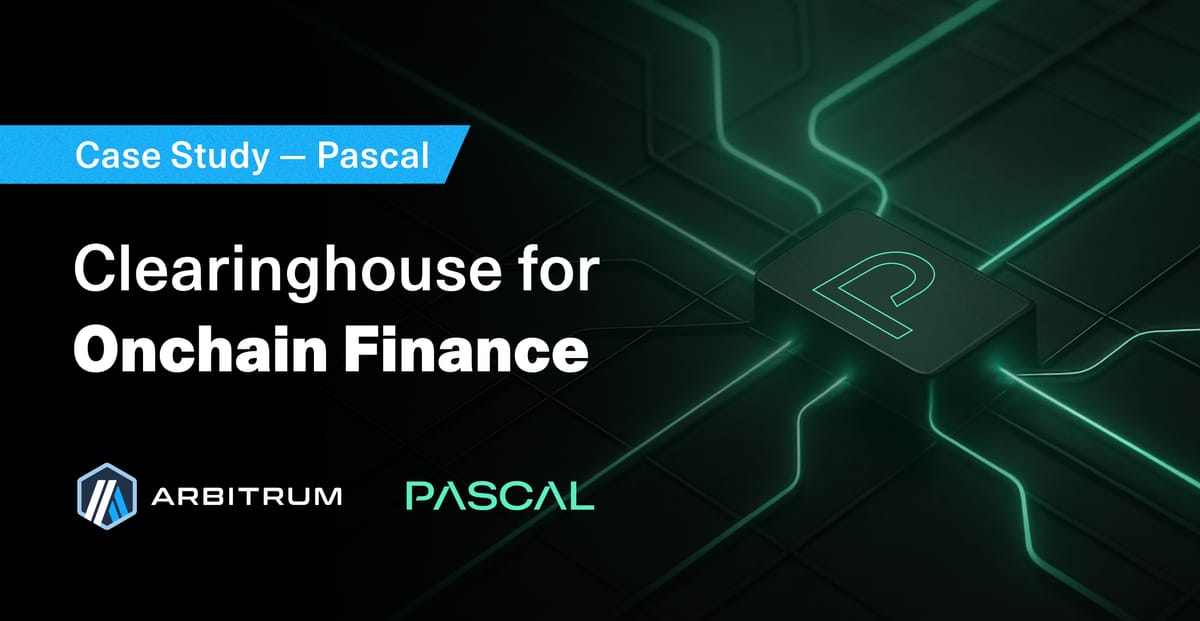How Pascal is Building the Clearinghouse for Onchain Finance

Derivatives are one of the largest segments in finance today. In fact, according to the Bank for International Settlements (BIS), the notional value of global over-the-counter derivatives reached approximately $667 trillion at the end of 2023, of them, interest rate derivatives made up roughly 79% of global OTC exposure.
This huge market, however, is largely untapped on-chain. The reason is simple: DeFi does not have the necessary clearing infrastructure that can allow this market to function at scale. This is where Pascal Protocol steps in. Pascal is building a decentralized clearing layer with the aim of becoming a risk management backbone for traditional markets.
How Does Pascal Protocol Work?
Pascal grew out of a venture builder, its seasoned founders had previously launched decentralized exchanges and other blockchain projects but saw that there was an opportunity in the derivatives market that had yet been tapped into.
At its core, Pascal is a protocol that is designed to enable risk clearing for futures and options, where counterparty risk is removed from a centralized institution and trust is placed into a transparent, auditable smart contract.
Rather than treating each position separately, Pascal’s risk engine evaluates the trader's entire portfolio and then calculates the minimum collateral required in order to make a trade. The smart contract will then lock in only the collateral to ensure that positions are covered without over reserving funds. This means that clearing decisions are made by a logic-driven smart contract, and no intermediaries would be involved.
The first implementation of Pascal is Jetstream, a futures platform that launched earlier this year. Jetstream allows users to trade in a capital efficient way through margin matching across correlated positions. Currently, Jetstream operates on a hyperliquid-inspired incentives scheme where trading volume is rewarded on a weekly basis with points that will convert into JETS tokens in the future.
Built with Arbitrum Stylus
Building Pascal required mature DeFi technology as clearing is not a simple swap function, but rather, is a multi-state problem which requires balancing complex collateral models, risk management and trade possibilities. Solidity, the primary coding language for EVM smart contracts, was not set up for the task. The team wanted to utilize Rust, which was much more prepared for high quality testing and object-oriented design.
At the same time, the Pascal team knew that being in the Ethereum ecosystem was a necessity, as it was the hub for DeFi activity and liquidity.
This is why the team turned to Stylus, which was able to combine the best of both worlds: Rust programming with EVM compatibility. Stylus made it possible for Pascal to create institutional grade tools without having to compromise on Ethereum’s community and tools.
“Thanks to Stylus, we can fully exploit the potential of Rust, WASM, and LLVM to create advanced and efficient smart contracts, all while preserving complete interoperability with the entire Ethereum ecosystem,” Ivan Ivashchenko, CTO of Pascal Protocol said. “This makes Stylus the only real choice for us to implement fully functional portfolio margin management for derivatives trading onchain.”
Fast forward to today, Pascal now runs over seventy smart contracts on Arbitrum in order to support its operations. It has built custom data structures, advanced serialization, and a full fuzz-testing framework to ensure the robustness of their system, and none of this would have been possible without Arbitrum Stylus.
What’s Next For Pascal?
Arbitrum Stylus, the technology that powers Pascal, ensures that Pascal can meet institutional standards while remaining grounded in DeFi principles of decentralization and transparency.
Beyond Jetstream, the Pascal team is also working with partners who are planning to launch platforms for benchmark interest rate derivatives. Other asset classes which are on the horizon include metals, carbon markets, and energy products.
